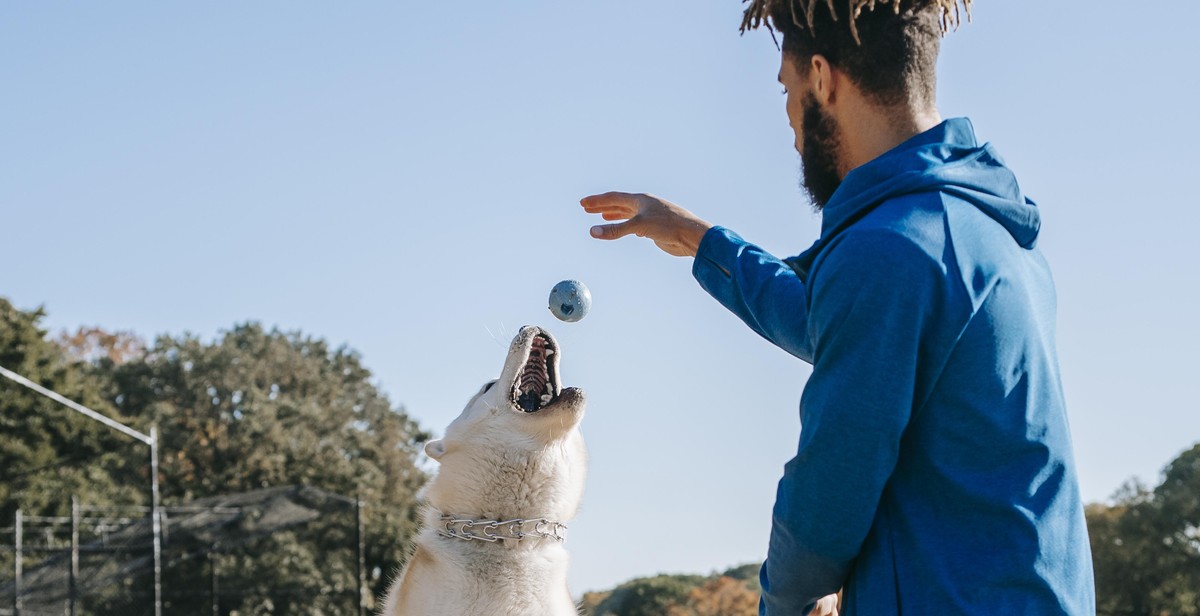How to Choose the Right Dog Harness for Walking and Training
Walking and training your dog is one of the most important aspects of pet ownership. It not only helps to ensure that your dog gets the exercise they need, but it also strengthens the bond between you and your furry friend. However, choosing the right dog harness for walking and training can be a daunting task, especially with so many options available on the market.
Why is Choosing the Right Dog Harness Important?
Choosing the right dog harness is important for a number of reasons. Firstly, it ensures your dog’s safety and comfort during walks and training sessions. Secondly, it helps to prevent injuries and reduce the risk of strain on your dog’s neck and spine. Lastly, the right dog harness can make it easier for you to control your dog during walks and training sessions, which can result in a more enjoyable experience for both you and your pet.
Factors to Consider When Choosing a Dog Harness
When choosing a dog harness, there are several factors to consider. These include the size and breed of your dog, the purpose of the harness (i.e. for walking or training), the material and construction of the harness, and any additional features such as reflective strips or padding.
- Size and Breed: It is important to choose a harness that fits your dog comfortably and securely. Measure your dog’s chest and neck to ensure you choose the correct size, and consider the breed of your dog to determine which harness style will work best.
- Purpose: Decide whether you need a harness for walking, training, or both. Some harnesses are designed specifically for training, while others are better suited for everyday walks.
- Material and Construction: Look for a harness made from durable and breathable materials, such as nylon or neoprene. Ensure the harness is well-constructed and has strong, secure fastenings.
- Additional Features: Consider any additional features you may need, such as reflective strips for night-time walks, or padding for extra comfort.
By taking these factors into consideration, you can choose the right dog harness for walking and training that will ensure your dog’s safety, comfort, and enjoyment.
Why a Dog Harness is Important
A dog harness is an essential accessory for every dog owner, whether you have a small or large breed. It is designed to provide better control, reduce the risk of injuries, and prevent pulling during walks and training sessions. Here are some reasons why you should consider using a dog harness:
Better Control
A dog harness is designed to fit snugly around your dog’s body, providing better control and stability during walks and training sessions. Unlike a collar, which can put pressure on your dog’s neck and cause discomfort, a harness distributes the pressure evenly across your dog’s chest and back. This helps to reduce the risk of injuries and allows you to have better control over your dog’s movements.
Reduced Risk of Injuries
A dog harness is particularly important for dogs that have a tendency to pull or lunge during walks. When a dog pulls on a collar, it can put pressure on the neck and cause injuries such as tracheal collapse or neck strain. A harness, on the other hand, distributes the pressure evenly across the body, reducing the risk of injuries and providing a more comfortable walking experience for your dog.
Prevents Pulling
If your dog has a habit of pulling during walks, a harness can help to prevent this behavior. A no-pull harness is designed to discourage pulling by gently tightening around your dog’s chest when they pull on the leash. This helps to train your dog to walk calmly on a leash and prevents them from choking or injuring themselves.
Overall, a dog harness is an important accessory for every dog owner. It provides better control, reduces the risk of injuries, and prevents pulling during walks and training sessions. When choosing a dog harness, consider the size, breed, and behavior of your dog to ensure that you select the right harness for your furry friend.

Types of Dog Harnesses
There are several types of dog harnesses available in the market, each designed to serve a specific purpose. Here are the most common types:
Back-clip Harness
The back-clip harness is the most basic and common type of dog harness. It features a D-ring attachment on the back of the harness where you can attach the leash. This type of harness is ideal for small dogs, puppies, and dogs that don’t pull on the leash. It’s also great for walking and jogging with your dog. However, it’s not recommended for dogs that pull on the leash as it can encourage them to pull even more.
Front-clip Harness
The front-clip harness features a D-ring attachment on the front of the harness, which is located on the dog’s chest. This type of harness is designed to discourage pulling and make it easier to control your dog. When your dog pulls on the leash, the front-clip harness will turn them around, making it harder for them to continue pulling. This type of harness is ideal for dogs that are strong pullers or those that need some training on how to walk on a leash.
Dual-clip Harness
The dual-clip harness is a combination of the back-clip and front-clip harness. It features two D-ring attachments, one on the back and one on the front of the harness. This type of harness gives you the flexibility to use either the front or back clip depending on the situation. For instance, you can use the front clip for training and the back clip for casual walks.
No-pull Harness
The no-pull harness is designed specifically to prevent your dog from pulling on the leash. It features a front D-ring attachment and a unique design that tightens around your dog’s chest when they pull. This type of harness is ideal for dogs that are strong pullers and need some extra training. It’s also great for dogs that have breathing problems as it doesn’t put pressure on their necks.
| Types of Harnesses | Pros | Cons |
|---|---|---|
| Back-clip Harness | Easy to use, comfortable for dogs, ideal for small dogs and puppies | Not suitable for strong pullers, can encourage pulling |
| Front-clip Harness | Discourages pulling, easier to control your dog, ideal for strong pullers and dogs that need training | May cause rubbing on the dog’s chest, not suitable for small dogs and puppies |
| Dual-clip Harness | Flexible, can use either front or back clip, ideal for training and casual walks | May cause rubbing on the dog’s chest, not suitable for small dogs and puppies |
| No-pull Harness | Prevents pulling, ideal for strong pullers and dogs with breathing problems | May cause rubbing on the dog’s chest, not suitable for small dogs and puppies |

Factors to Consider When Choosing a Dog Harness
Choosing the right dog harness is essential for your pet’s safety, comfort, and overall well-being. There are several factors to consider when selecting a dog harness, and we have highlighted some of the most crucial ones below.
Size and Fit
The size and fit of a dog harness are crucial factors to consider when choosing a harness. A poorly fitting harness can cause discomfort, chafing, and even injuries to your dog. When selecting a harness, make sure to measure your dog’s chest, neck, and girth to ensure a perfect fit. A well-fitting harness should be snug but not too tight, and you should be able to fit two fingers between the harness and your dog’s skin.
Material and Durability
The material and durability of a dog harness are also important considerations. The harness should be made of durable materials that can withstand wear and tear, especially if you have an active dog. Additionally, the material should be comfortable and breathable to prevent chafing and irritation.
Purpose and Activities
The purpose and activities you plan to engage in with your dog are also essential considerations when choosing a harness. For instance, if you plan to use the harness for walking, running, or hiking, you’ll need a harness with sturdy construction and good padding. On the other hand, if you plan to use the harness for training, you’ll need a harness that allows you to attach a leash easily.
Comfort and Padding
The comfort and padding of a dog harness are crucial for your dog’s well-being. The harness should have enough padding to prevent rubbing and chafing, especially if your dog has sensitive skin. Additionally, the harness should be comfortable enough for your dog to wear for extended periods.
Ease of Use and Adjustability
The ease of use and adjustability of a dog harness are also important factors to consider. A good harness should be easy to put on and take off, and the straps should be adjustable to ensure a perfect fit. Additionally, the harness should have a secure locking mechanism to prevent accidental escapes.
| Factors | Description |
|---|---|
| Size and Fit | Measure your dog’s chest, neck, and girth to ensure a perfect fit. |
| Material and Durability | The harness should be made of durable materials that can withstand wear and tear. |
| Purpose and Activities | Consider the activities you plan to engage in with your dog when selecting a harness. |
| Comfort and Padding | The harness should have enough padding to prevent rubbing and chafing. |
| Ease of Use and Adjustability | The harness should be easy to put on and take off, and the straps should be adjustable. |
By considering these factors, you can choose the right harness for your dog that will ensure their comfort, safety, and overall well-being.
Conclusion
Choosing the right dog harness for walking and training is crucial to ensure the safety and comfort of your furry friend. With so many options available in the market, it can be overwhelming to make a decision. However, by considering the factors discussed in this article, you can narrow down your search and find the perfect harness for your dog.
Remember the Importance of Proper Fit
One of the most important things to keep in mind when choosing a dog harness is to ensure that it fits your dog properly. A poorly fitting harness can cause discomfort, chafing, and even injury to your dog. Take accurate measurements of your dog’s chest and neck and choose a harness that provides a snug and secure fit without being too tight.
Consider Your Dog’s Needs
Think about your dog’s size, breed, and temperament when choosing a harness. For example, a harness with a front clip may be more suitable for a strong puller, while a back clip harness may be better for a smaller dog. Also, consider the type of activities you will be doing with your dog, such as hiking or running, and choose a harness that is appropriate for those activities.
Choose a High-Quality Harness
Investing in a high-quality harness is worth it in the long run. A well-made harness will last longer and provide better support and comfort for your dog. Look for harnesses made from durable materials, with sturdy hardware and strong stitching.
Final Thoughts
Choosing the right dog harness can make a world of difference in your dog’s walking and training experience. By considering your dog’s needs, choosing a proper fit, and investing in a high-quality harness, you can ensure that your furry friend is safe, comfortable, and happy on all your walks and adventures together.
